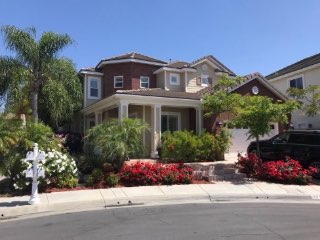
AREA Inspections
(CMI) Certified Master Inspector

Summary
| Client(s): | Prospective Buyers |
| Property address: | 17101 Santa Cruz Ct Yorba Linda CA 92886-6246 |
| Inspection date: | Monday, June 15, 2020 |
This report published on Wednesday, June 17, 2020 9:40:10 AM PDT
This report is the exclusive property of this inspection company and the client(s) listed in the report title. Use of this report by any unauthorized persons is prohibited.
LIMITED WARRANTY
This inspection report is a written communication describing the condition of the property inspected. Its purpose is to indicate the existing condition of the subject property. It is not meant to be a demand for repairs by the owner of subject property and communicates a written report of the then existing conditions on the property at the time of the inspection.
During the inspection, our inspectors do not take apart equipment, structures, apply stress and/or perform destructive testing or move furniture and equipment to view areas. Any areas which are visually hidden or not readily accessible are not covered within this report.
Additionally this report does not include and is not a substitute for a Real Estate Transfer Disclosure Statement, Form TDS-14, California Civil Code Section 1102.
*Evaluate as to weather there are any city, county, or state code violations on the property.
*Evaluate the slopes, grading or credibility of any retaining walls or drainage on the property.
*Perform termite inspections.
*Test security devices.
*Evaluated the presence or extent of insulation and vapor barriers in exterior walls and soffitts.
*Enter crawl areas where headroom is less than tree feet or where other adverse conditions exist.
*Walk on the roof where it could damage the roof materials or be unsafe for the inspector.
*Enter attic spaces that are not readily accessible or where headroom above the access panel is less than three feet.
*Inspect underground drainage pipes or internal rain gutters and downspouts.
*Operate any main branch or fixture valves that are turned off.
*Inspect any plumbing components that are not visible or readily accessible.
*Inspect water quality, water conditioning equipment and solar water. heating systems.
*Evaluate the ability of the systems to comply with the current codes.
*Inspect or activate interior fire sprinkler systems.
*Activate or operate any system that has been shut down.
*Evaluate the mounting of any kitchen cabinets.
*Make repairs or give estimates. Inspect septic tanks.
*Inspect septic tanks. Inspect or test electronic thermostats.
*Turn on or off pool valves.
*Guarantee any appliances and/or pool equipment.
*Determine or test for leaks in the roof.
*Any damage done in the attic or under the house, including air ducts, if a termite inspection is made to the property after the completed inspection.
*Damage caused by tenting and/or termite inspection.
| Safety Concern | Poses a risk of injury | |
| Repair/Replace | Recommend repairing or replacing | |
| Repair/Maintain | Recommend repair and/or maintenance | |
| Minor Defect | Correction likely involves only a minor expense | |
| Maintain | Recommend ongoing maintenance | |
| Evaluate | Recommend evaluation by a specialist | |
| Monitor | Recommend monitoring in the future | |
| Serviceable | Item or component is in serviceable condition | |
| Comment | For your information |
General Information
http://www.reporthost.com/?SEALUP
http://www.reporthost.com/?TRAPUP
http://www.reporthost.com/?CLEANUP
Grounds
Exterior and Foundation
Roof
Electric
- Outdoors (since 1973)
- Bathrooms (since 1975)
- Garages (since 1978)
- Kitchens (since 1987)
- Crawl spaces and unfinished basements (since 1990)
- Wet bar sinks (since 1993)
- Laundry and utility sinks (since 2005)
http://www.reporthost.com/?GFCI
http://www.reporthost.com/?INUSECVR
Plumbing / Fuel Systems
http://www.reporthost.com/?WTRFLTR
Heating, Ventilation and Air Condition (HVAC)
Fireplaces, Stoves, Chimneys and Flues
Kitchen
Bathrooms, Laundry and Sinks
http://www.reporthost.com/?DRYER
Interior, Doors and Windows
